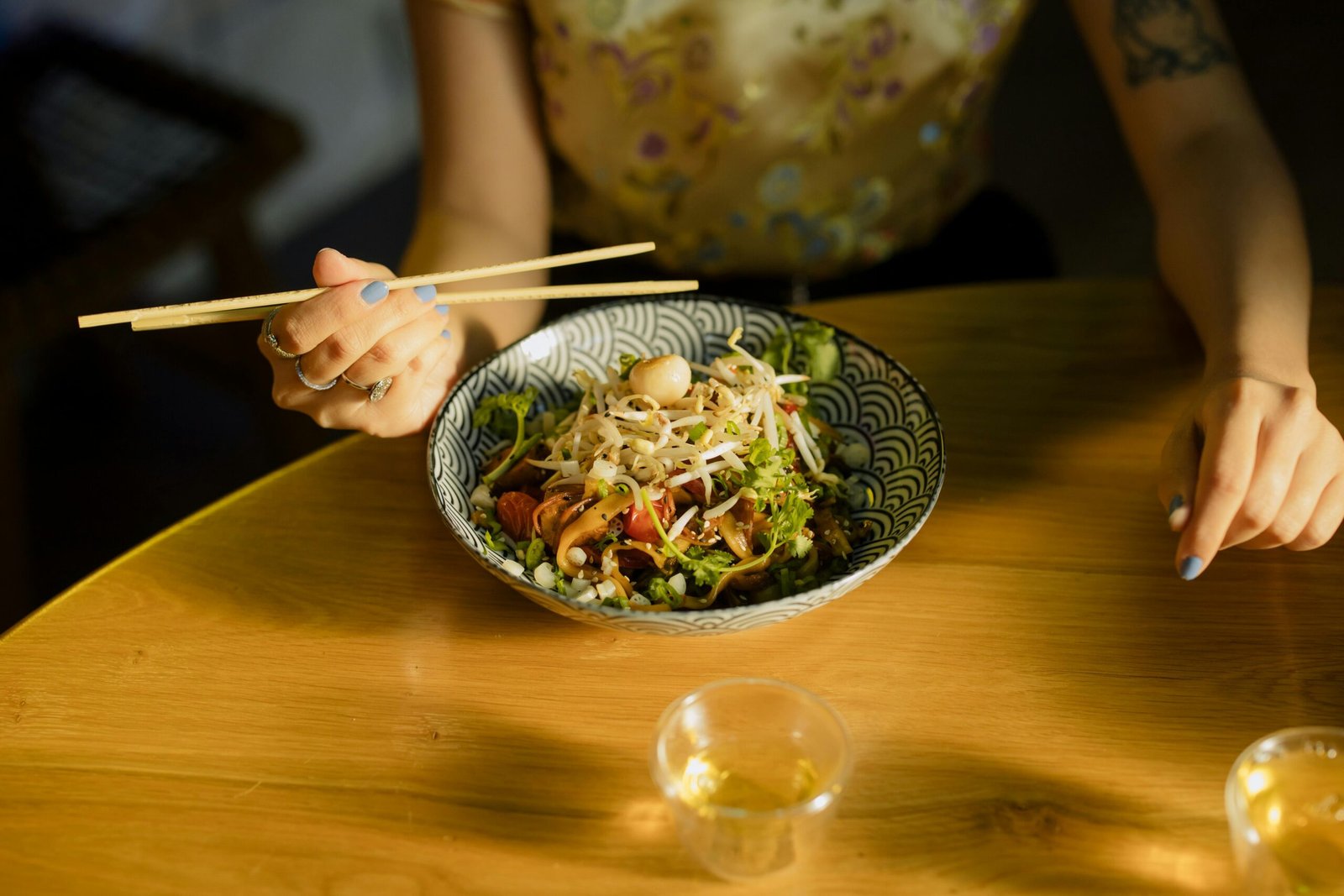The Beginner’s Guide to Slow Living: 10 Practical Tips to Start Living a Calmer Life
Slow living. I first stumbled upon this phrase last year as a burned out millenial mindlessly scrolling Instagram while sitting on my couch.
You might think that embracing slow living means quitting your job, moving to a small town, or completely overhauling your lifestyle. Hmm, not quite! Slow living doesn’t require major life changes.
You don’t need to live in a countryside cottage to start slowing down. Whether you have a full-time job in a bustling city or have a packed family schedule – you can still incorporate slow living in a way that fits your lifestyle.
If you’re curious about what slow living really means and how to start weaving it into your life, this post is for you! You’ll learn what slow living means, how it can improve your life, and 10 practical & actionable tips that you can take to help you slow down, simplify, and live life with more intention.
What Is Slow Living?
My favorite answer to this question comes from Wikipedia, which says that slow living is “a lifestyle which encourages a slower approach to aspects of everyday life, involving completing tasks at a leisurely pace”. It goes on to say that “…a slower pace encourages enjoyment of life, a deeper appreciation of sensory experiences, and the ability to ‘live in the present moment”.
If you deconstruct this definition, you can tease out a few key principles of slow living:
- Slowing down
- Doing things & completing tasks with purpose and intention
- Enjoying & prioritizing the things that truly matter in life
- Fully experiencing the moment with our senses
- Being present in the moment
It doesn’t mean that we do less – it just means that we do things with more intention and purpose at a rate that feels comfortable for us.
Note that there’s no particular activity or hobby that defines slow living. There is also no pressure to practice slow living 24/7. In fact, there many different ways to practice slow living and there is no one-size-fits-all approach to it.
You don’t have to move to the countryside, switch to an all-organic diet, raise farm animals, or take up baking in order to embrace slow living (unless you want to, of course!). You can weave the principles of slow living into life without making drastic changes – and the tips below will show you how!
Can I Practice Slow Living Even With a Busy Lifestyle?
YES – you can 100% practice slow living even with a busy lifestyle! You can shape the principles of slow living to fit your lifestyle, no matter how busy you are—even if it’s just for an hour in the morning, a few hours before bed, or over the weekend.
When I first started embracing slow living, I was living in New York City and had a very demanding full-time job. I couldn’t change my work schedule or commitments, but I could integrate slow living into the time I did have in the morning, after work, and on the weekends.
I started waking up an hour earlier to fit in a “slow morning” routine where I would sit outside, read a book, and drink coffee before I started getting ready for work. This allowed me to slow down and spend an hour immersing myself completely in something that brought me joy before the hectic workday began.
Over time, I started adding other “slow” periods into my busy lifestyle – such as before bedtime and a few hours on the weekend. The key is to start small and also make it a non-negotiable. Start practicing slow living for just 30 minutes each day at first, and gradually build up. See what works or doesn’t work, and adjust accordingly.
The Benefits of Slow Living
10 Practical Tips to Start Slow Living
1. Define What Slow Living Means to You
The first step is to figure out exactly what slow living means to you and how you wish to start incorporating it into your life.
Spend 10 minutes in a quiet spot with a notebook and pen. What are your goals – to create more space in your schedule, reduce stress, or spend more time doing things you love? Are you looking to make small changes or big changes? What part(s) of your day or week can you devote to slowing down without any distractions?
Think about what areas of your life feel rushed or stressful, and plan around those. For instance – if work is a big stressor in your life, then make a plan to take a “slow” lunch break where you practice mindful eating, plan a slow evening after work to decompress, or carve out 1-2 hours on a Sunday before a busy week ahead.
Next, write down a list of things you wish to prioritize during these slow periods. Add things that bring you joy, make you feel content, and allow you to be present in the moment. It can be simple things like drinking a cup of your favorite tea, meditation, gratitude journaling, doing physical activity, knitting, taking a bubble bath, or even just taking a small nap!
As an example – my favorite time of day to practice slow living is in the morning before a hectic day at work. My “slow” morning routine consists of sitting on my patio, drinking a hot cup of coffee, and reading a mystery novel. During this time, I make sure to put my phone away, drink my coffee slowly, read the book at a leisurely pace, and just appreciate this peaceful moment in time before a busy day at work.
I allow myself to get fully caught up in the moment – I listen to the birds chirp, savor the taste of my coffee, and feel the breeze as it rustles through the pages of my book. I find that this brings me a lot of peace, fulfillment, and helps me start the day off on a positive note.
2. Create Slow Routines & Rituals
Try creating a “slow” morning, evening, or weekly routine. Routines help you be more intentional with your time, and may even give you something to look forward to!
Pick 1-2 simple rituals at a time to incorporate into your routine. Choose activities that help you slow down, bring you joy, and just fill your cup. These small, intentional rituals can anchor you in the present moment and set the tone for a more relaxed, fulfilling day.
For example, instead of rushing through your morning, try waking up just 30 minutes earlier to journal or go for a short walk. Create an evening wind-down routine —this could include reading, stretching, or sipping herbal tea.
As you go through the routine, make sure to really immerse yourself in the moment and avoid any distractions.
It’s important to start off small – try out a morning routine for a few weeks and once you’ve mastered that, then start thinking about adding an evening routine. Don’t be afraid to try new things or adapt your routines over time.
3. Make Time For Self-Care
Slow living is a form of self-care. You’re doing things that bring you joy and give you fulfillment which in turns helps you take care of your physical and mental well-being. Self-care isn’t selfish; it’s a non-negotiable & essential part of life that’s important for maintaining balance and preventing burnout!
Self-care is often marketed as spa days and bubble baths, but at its core, it’s about nurturing yourself and replenishing your energy. Slow living encourages a deeper, more intentional approach to self-care.
Identify what truly makes you feel nourished and restored. It could be as simple as taking a midday walk, setting aside time to read, or cooking a meal from scratch. The key is to prioritize these moments, no matter how small, and allow yourself to enjoy them fully—without guilt or distractions.
My favorite way to practice self-care is to book a date with myself! I set aside 1-2 hours of uninterrupted time to do things that help me feel rejuvenated like going to a coffee shop, visiting the library, or even just having a spa night at home.
4. Set Boundaries
A big part of slow living is protecting your time and energy. Remember that self-care also means respecting your boundaries and saying “no” when needed!
Boundaries aren’t about shutting people out—they’re about protecting your peace and making room for the things that matter.
Start by evaluating your commitments—what feels fulfilling, and what feels draining? Learn to say no to obligations that don’t align with your values or priorities.
Set boundaries with work, social obligations, and even technology. For example, if work emails constantly invade your evenings, create a non-negotiable rule to log off at a specific time. If social media feels overwhelming, limit how much time you spend doom scrolling and prioritize real social connections instead.
5. Practice Mindful Eating at Mealtimes
I am definitely guilty of eating while scrolling on my phone! We’re so used to multitasking and rushing through meals, but it’s so important to slow down while eating.
Put away your phone, turn off the TV, and truly focus on the meal in front of you. Take your time while eating your meal, chew the food slowly, and savor the flavors of each bite.
Mindful eating can offer many health benefits as well. It can help improve digestion, prevent overeating, , and can turn mealtime into a peaceful experience. If you’re eating with others, it’s also a great time to have genuine conversations without any distractions!
Start by practicing mindful eating for at least one meal each day – whether it’s breakfast, lunch or dinner. Try it for a few days at first, maybe on the weekend or your day off.
6. Reconnect With Nature
Spending time outdoors, even just for 10 minutes a day, is a great way to embrace simplicity, reduce stress, and appreciate the beautiful world we live in.
This can take many forms – sipping coffee on your porch, eating outside on your lunch break, walking barefoot in the grass, going on a hike, or just taking a short stroll. Anything that gets you of the house and into the fresh air!
You can also reconnect with nature through activities like collecting leaves, making pressed flower creations, bee-keeping, bird watching, going to a butterfly garden, planting flowers in your garden, etc.
Whichever activity you choose, make sure to fully immerse yourself in the moment and appreciate the sights and sounds of the world around you. Truly let yourself be present in the moment with all of your senses. Listen to the birds chirp, smell the flowers on your walk, appreciate the crunch of the leaves, watch the water ripple in the pond.
7. Take Up a New Hobby
I think the most rewarding part of slow living is making time for simple activities that bring you joy. Hobbies are so important, but often an overlooked part of life.
Engaging in a hobby helps you slow down, focus, and be present in the moment. If you don’t already have a hobby, start by exploring activities that genuinely interest you and will help you feel fulfilled. Think back to what you loved as a child and find hobbies based around those.
There’s are so many activities you can choose from – painting, knitting, gardening, reading, playing a musical instrument, etc. You could also play a new sport, start a volunteer project, or even take an online course if that’s what you prefer!
The key is to embrace the process rather than the outcome. Allow yourself to engage in the activity completely rather than worrying about perfection or the end result.
8. Create a Screen-Free Zone
While technology is undeniably useful, constant exposure to screens—whether through social media, emails, or TV—can leave us feeling mentally drained and disconnected from the present moment.
Creating a cozy space in your house that’s considered a screen-free zone is a simple way to embrace slow living and encourage more meaningful, mindful moments.
It could be a reading nook, your bedroom, or even the dining table. Keep it free of phones, tablets, and TVs to encourage more presence and connection. I have a small cozy reading nook in my morning room that I consider my tech-free zone. We also have a rule in our family that everyone puts their phone away during mealtimes, which helps us bond as a family without distractions.
Get creative and have fun with this space! Consider it your sanctuary to turn off the world and just relax in the moment.
9. Declutter Your Home
Cluttered space = cluttered mind. It can make your home feel overwhelming and distracting. A clean space will help you stay organized and help you take note of things that truly bring you joy.
Slow living encourages a more minimalist, intentional approach to the things we own—keeping only what serves a purpose or brings us joy. Cleaning can also be therapeutic for some, and is a great way to practice mindfulness.
Start small by decluttering one space at a time. Tackle a single drawer, shelf, or closet, and be mindful of how each item makes you feel. If something no longer serves you, donate or repurpose it.
10. Practice Gratitude
Gratitude is a cornerstone of slow living. It took me a while to start practicing gratitude. But it’s truly helped shift my mindset to appreciating all the abundance in my life – even ones I used to take for granted.
A simple way to practice gratitude is by keeping a daily journal. Each evening, write down three things you were grateful for that day, no matter how big or small. If you need a little more guidance, try bullet journaling or journal prompts.
Other ways to practice gratitude is to write cards to loved ones or volunteering. The more you practice gratitude, the more you’ll begin to notice the beauty in ordinary moments, fostering a slower, more intentional way of living.
I hope you found these tips helpful in starting your slow living journey! Let me know what you think of this post in the comments below. Are there any other tips you’ve found helpful? What does slow living mean to you? I’d love to hear from you!























